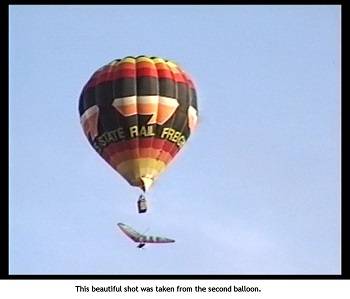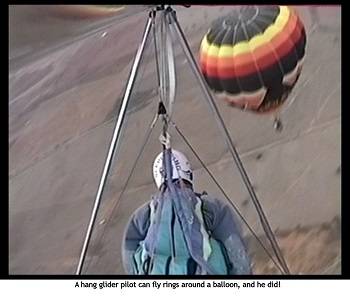An aircraft takes off or lands into the wind, it gives them the ability to be traveling slower relative to the ground and still have lift. Suppose a small aircraft has a stall airspeed, or the speed below which it doesn't produce enough lift to stay aloft, of 50mph. If it comes in for a landing WITH a wind that's blowing 30mph, just to stay in the air until it touches down, the pilot has to be going at least 80mph ground speed.
Not a direct answer to your question, but two of my sons, in an Australia-first, launched their hang gliders from the bottom of a hot air balloon at a town called Canowindra.


Just as he was coming in to land he realised, too late, that balloons fly WITH the wind but he had to land INTO it. I have his voice on the video he was taking at the time and his comment was kind of excremental.
He damaged the kite, broke the camera, and bruised himself.
---
On a comical note, when the group arrived at their motel they found that the whole town had been talking about their flight. The motel manager asked if they'd mind paying up front. She thought they were likely to kill themselves.
I am not a pilot, but I would also guess that flying directly into the wind on takeoff essentially limits any lateral force on the plane that the pilot may otherwise need to compensate for.
You can follow up here if you are so inclined: www.askacfi.com/3010/crabbing-slip-sideslip.htm
If a vehicle, be it a car or an airplane, were to travel towards the direction of the wind, it will definitely move at a much faster speed which might lead to an accident. Hence, the notion to travel against the direction of the wind is to have greater control of the said vehicle to prevent any mishaps from occurring.
According to me, When an aircraft takes off or lands into the wind, it gives them the ability to be traveling slower relative to the ground and still have left. Suppose a small aircraft has a stall airspeed, or the speed below which it doesn't produce enough lift to stay aloft, of 50 m/h. If it comes in for a landing with a wind that's blowing 30 m/h, just to stay in the air until it touches down, the pilot has to be going at least 80 m/h ground speed.
 Airplane pilots prefer to take off against the wind because it takes less ground speed to create enough lift to fly.
Airplane pilots prefer to take off against the wind because it takes less ground speed to create enough lift to fly.